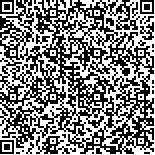| 引用本文: | 马贵凤,祝洁,曹慧军,陈强,江滟.EGCG通过p38信号因子诱导IFN-β抗甲型流感病毒感染的研究[J].中国现代应用药学,2021,38(6):661-666. |
| MA Guifeng,ZHU Jie,CAO Huijun,CHEN Qiang,JIANG Yan.Study on EGCG Against Influenza A Virus Through Inducing the Production of IFN-b by the p38 Signal Factor[J].Chin J Mod Appl Pharm(中国现代应用药学),2021,38(6):661-666. |
|
| 本文已被:浏览 9867次 下载 4607次 |

码上扫一扫! |
|
|
| EGCG通过p38信号因子诱导IFN-β抗甲型流感病毒感染的研究 |
|
马贵凤1,2,3, 祝洁1,2,3, 曹慧军1, 陈强1, 江滟1
|
|
1.贵州医科大学附属医院临床检验中心微生物免疫科, 贵阳 550004;2.贵州医科大学微生物学教研室, 贵阳 550004;3.贵州省普通高校病原生物学特色重点实验室, 贵阳 550004)
|
|
| 摘要: |
| 目的 探讨表没食子儿茶素没食子酸酯(epigallocatechin gallate,EGCG)通过p38信号因子诱导IFN-β抑制甲型流感病毒H1N1复制作用机制。方法 将EGCG作用于人气管上皮细胞(BEAS-2B),通过qRT-PCR和ELISA检测BEAS-2B中IFN-β mRNA和蛋白的表达,Western blotting检测p38和p-p38蛋白表达;使用p38抑制剂抑制p38信号因子的信号传导,检测EGCG作用BEAS-2B细胞诱导的IFN-β蛋白和mRNA表达;用IFN-β抗体中和细胞中IFN-β的产生,通过qRT-PCR和Western blotting检测EGCG作用H1N1后NP蛋白和mRNA的表达。结果 与EGCG(0 μg·mL-1)相比,随着EGCG剂量增加,IFN-β蛋白和mRNA明显增加。与作用0 h相比,EGCG(20 μg·mL-1)作用细胞12 h时诱导IFN-β蛋白表达显著(P<0.01)。EGCG可促进BEAS-2B中p38磷酸化;使用p38抑制剂抑制p38信号通路后,EGCG诱导IFN-β mRNA和蛋白表达减少(P<0.01)。与EGCG单独治疗感染H1N1的细胞相比,EGCG和IFN-β抗体共同治疗,可明显升高感染细胞中NP蛋白和mRNA表达水平(P<0.05)。结论 EGCG可通过上调p38信号因子磷酸化水平诱导BEAS-2B产生IFN-β,从而抑制H1N1复制。 |
| 关键词: 表没食子儿茶素没食子酸酯 p38信号因子 IFN-β 甲型流感病毒 |
| DOI:10.13748/j.cnki.issn1007-7693.2021.06.005 |
| 分类号:R966 |
| 基金项目:国家自然科学基金项目(81260249) |
|
| Study on EGCG Against Influenza A Virus Through Inducing the Production of IFN-b by the p38 Signal Factor |
|
MA Guifeng1,2,3, ZHU Jie1,2,3, CAO Huijun1, CHEN Qiang1, JIANG Yan1
|
|
1.Department of Microbiology and Immunology, Inspection Center, Affiliated Hospital of Guizhou Medical University, Guiyang 550004, China;2.Microbiology Teaching and Research Section, Guizhou Medical University, Guiyang 550004, China;3.Key Laboratory of Medical Microbiology and Parasitology of Education Department of Guizhou, Guiyang 550004, China
|
| Abstract: |
| OBJECTIVE To explore the mechanism of epigallocatechin gallate(EGCG) inhibit influenza A virus H1N1 replication through inducing production of IFN-β by the p38 signaling factor. METHODS EGCG was applied to human tubular epithelial cells(BEAS-2B), the expression of IFN-β mRNA and protein in BEAS-2B was detected by qRT-PCR and ELISA, and the expression of p38 and p-p38 protein was detected by Western blotting. Used p38 inhibitors to inhibit the signal transduction of p38 signal factors, and detected the effect of EGCG on BEAS-2B cells to induce the expression of IFN-β protein and mRNA. IFN-β antibody was used to neutralize the production of IFN-β in cells, and the expression of NP protein and mRNA after EGCG treated H1N1 was detected by qRT-PCR and Western blotting. RESULTS Compared with EGCG(0 μg·mL-1), as the dose of EGCG increased, IFN-β protein and mRNA increased significantly. Compared with 0 h of treatment, EGCG(20 μg·mL-1) induced significant IFN-β protein expression when cells were treated for 12 h(P<0.01). EGCG could promote the phosphorylation of p38 in BEAS-2B; after the use of p38 inhibitors to inhibit the p38 signaling pathway, EGCG induced a decrease in IFN-β mRNA and protein expression(P<0.01). Compared with EGCG alone in the treatment of H1N1 cells, the co-treatment of EGCG and IFN-β antibody could significantly increase the expression of NP protein and mRNA in the infected cells(P<0.05). CONCLUSION EGCG can induce the production of IFN-β in BEAS-2B by up-regulating the phosphorylation level of p38 signal factor, thereby inhibiting H1N1 replication. |
| Key words: epigallocatechin gallate(EGCG) p38 factor IFN-β influenza A virus |
